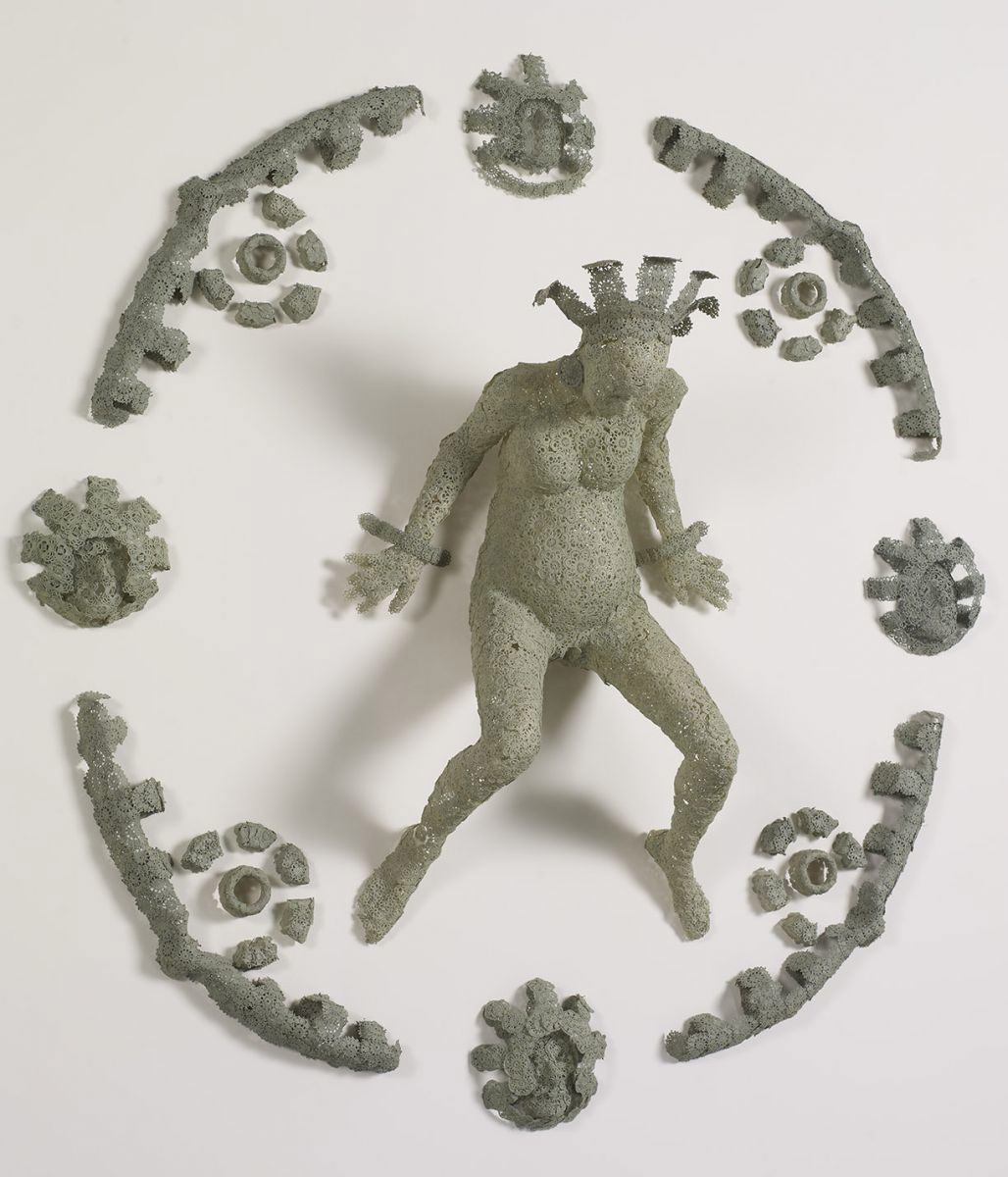- Open Today: 10.00–18.00
- Ticket
- Shop
- Membership
- TR EN

Ozan Oganer, 1973
Mol, 2011
Born in 1973, Ozan Oganer graduated from the Faculty of Fine Arts (Department of Sculpture), Dokuz Eylül University. Recently, he has begun using lace; he uses the empty display space to shape his works and the play of light to add permeability.
His work, Mol, references Mayan beliefs. The word Mol means “water” in the Mayan language and is also the name of the month for celebrating survival from the great flood, which plays a major part in their mythology. Deities called the Bacabs representing the four cardinal directions of the earth escaped the great flood and reestablished the former world order which enabled the perpetuation of humankind. The goddess seen in this work appeared in this new order. The lace sculpture also functions like a kind of mask. In ancient cultures it was believed that priests telepathically communicated with gods through the masks they wore, especially during religious rites. The person wearing the mask assumes the persona of the deity and becomes a kind of god-human. As for lace, it is a very important element with ancient origins. In Turkish handicrafts it signifies the labor and purity of woman. Through the figure of a goddess, made out of lace, Oganer shows qualities such as productivity, purity, and sanctity, which in different cultures throughout history have been attributed to women. While he covers the female body and her sexuality with transparent lace, Oganer illuminates the cultural and mental aspects that remain under the veil.
Sculpture
Mixed media
Dr. Nejat F. Eczacıbaşı Foundation Collection
Istanbul Museum of Modern Art / Long Term Loan